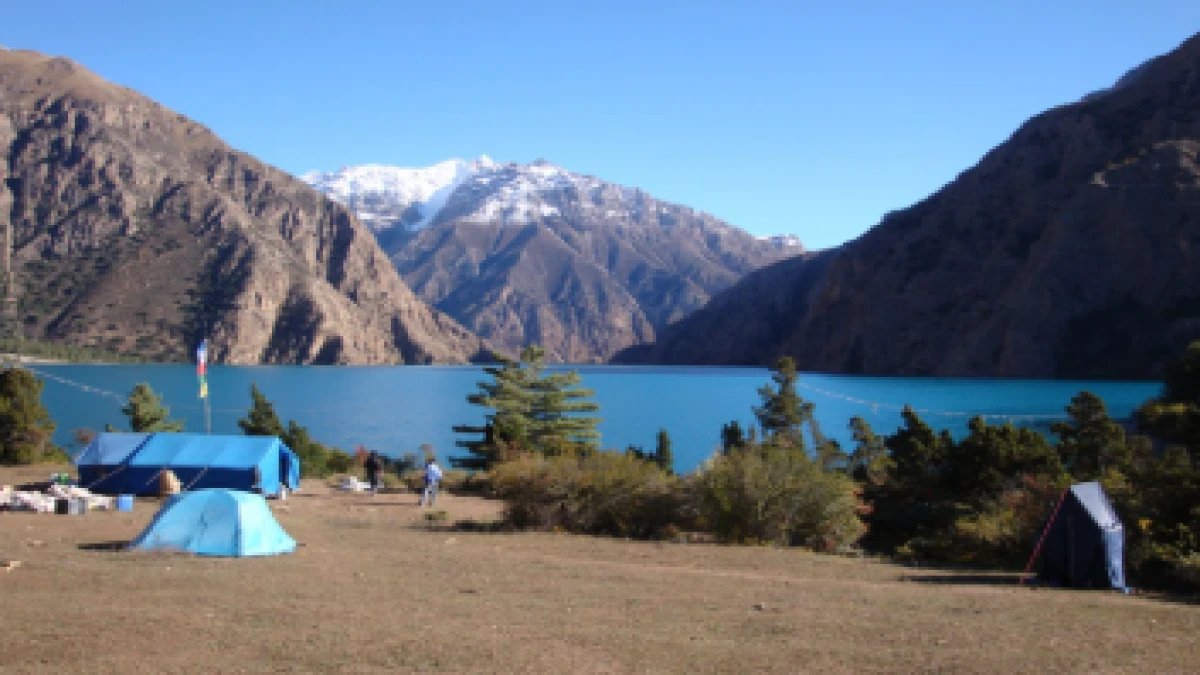The Rara Lake Trek is a profound Himalayan adventure into the untouched and lesser-explored region of western Nepal. Spanning 13 days, this journey offers a completely different perspective of Nepal, away from the well-trodden trails of Everest and Annapurna. Instead, we’re immersed in a world of pristine alpine forests, ancient cultural heritage, and villages where time has stood still for centuries.
The highlight of the trek is Rara Lake (2,990m), Nepal’s largest and most mesmerizing lake, located in the heart of Rara National Park. Its turquoise waters reflect the surrounding pine-clad hills and distant snow-capped peaks. It feels like a dream, so pure and peaceful that many describe it as Nepal’s “hidden blue jewel.” This journey is not only about reaching the lake, but about the silent forests, ethnic villages, remote mountain passes, and the deep connection we forge with nature and local communities along the way.
This trek is ideal for those who seek authenticity, solitude, and spiritual connection, offering an off-the-beaten-path experience that rewards trekkers with raw natural beauty and cultural depth.
Who Is This Trek For? Can Beginners Do the Rara Lake Trek?
This trek is designed for those who crave wilderness and cultural richness. It is best suited for:
- Moderately fit trekkers who can walk 5–7 hours a day
- Adventure lovers seeking less-commercial routes
- Cultural explorers interested in local ethnic groups like the Thakuri and Magar
- Trekkers who prefer nature and silence over crowds and tourist towns
While it’s not technical or high-altitude intensive, the remoteness of the route means you should be comfortable with long days, simple lodging, and few facilities. First-time trekkers can do this with a guide or organized group, especially during spring or autumn.
What Does the Rara Lake Trek Offer That Others Don’t?
The Rara Lake Trek is a full sensory and emotional experience. It offers:
- Pure Himalayan solitude, no crowds, no rush
- Cultural immersion in untouched villages and traditions
- Walks through Rara National Park, home to endangered wildlife like the musk deer, red panda, and Himalayan black bear
- The opportunity to see Rara Lake, which changes color throughout the day and is encircled by snow-capped mountains and pine forests
- Views from Murma Top (3,730m), an aerial lookout that reveals the full scale of the lake against the backdrop of distant Himalayan peaks
Unlike Everest or Annapurna treks, this one isn’t about the highest altitude or biggest climbs; it’s about feeling the land, connecting with the people, and experiencing raw beauty that remains unspoiled by tourism.
How to Reach the Rara Lake Trek Starting Point
The trek starts from Jumla, a mountain town in western Nepal. Reaching there involves two flights:
- Kathmandu to Nepalgunj (around 1 hour)
- Nepalgunj to Jumla (around 30 minutes, weather-dependent)
Because flights are subject to delays due to weather and limited schedules, it’s wise to keep buffer days if planning independently.
Why Is the Rara Lake Trek One of Nepal’s Most Underrated Treks?
Because it remains pure, wild, and deeply emotional, the lake itself is magical, but the entire journey leading to it is equally rewarding. The Rara Lake Trek brings us face-to-face with Nepal’s untouched natural and cultural beauty.
While many chase the Everest Base Camp or Annapurna Circuit, Rara remains unspoiled, giving us space to reflect, breathe, and find a deeper connection with the land. In just under two weeks, we discover a side of Nepal that few ever see but no one ever forgets.




 based on 6 reviews
based on 6 reviews